OBJECTIVES OF FORM TRAINING IN SOLO

Solo form training during the Sabah Intensive Shaolin Kungfu Course
Form training in solo is an important aspect in kungfu training. In fact, that is what masters normally do. However, most kungfu practitioners today do not realize the meaning or objectives in solo form training. They practice their forms almost solely for demonstration.
Pleasing spectators, of course, was never an objective of form training in the past. In genuine, traditional kungfu, solo form training accomplishes the following objectives
- Performing kungfu techniques in picture-perfect forms
- Breath control
- Developing and exploding force
- Developing correct and spontaneous responses
- Developing speed and stamina
- Being fluent in combat sequences
- Practicing variations in combat
- Practicing tactics and strategies
This video series show how participants at the Sabah Intensive Shaolin Kungfu Course of March 2007 accomplish some of these objectives in solo form training.
Forceful and Fast, Yet Not Tired or Panting for Breath
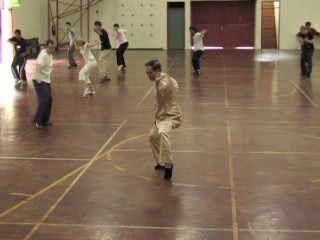
Here is the initiator's mode of Sequence 8. When your forms are correct, you should back up your forms with force. The force comes from flowing chi, and not from muscular tension. Hence, you can be forceful and fast, yet not tired or panting for breath.
The Skills of Form, Force and Speed
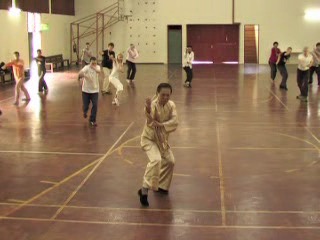
Here is the responder's mode of Sequence 8. First your forms should be picture-perfect. Next they should have force. Then they should be performed with speed. Practicing the sequence in solo is a good way to accomplish these important skills of correct form, force and speed.
Practice Shaolin Kungfu, Not Opium Smoking
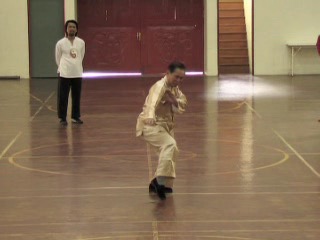
You should avoid in your practice of performing your forms incorrectly, without force and without presence of mind. This is jokingly called “opium smoking”. Each time you practice, your movement should be a masterpiece, so that if you have practiced for three years, you have benefited for three years — not that you have conditioned yourself to bad habits for three years.
Power from Internal Force, Not Muscular Strength

There must be power in your movements. The power comes from internal force and not muscular strength. Internal force is exploded from the dan tian in a punch and in a palm interception. If there is not sufficient force, an attacker's sweeping attack will break through the defence.
Smooth Flow of Movements
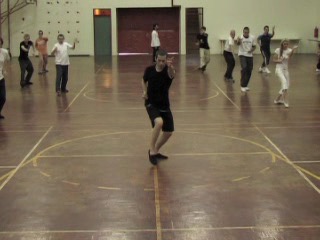
Here are Combat Sequences 5 and 6. The patterns in a sequence are not performed individually, but continuous as a sequence. The emphasis is not on speed, but on smooth flow of movements. The forms must, of course, be picture-perfect. If they are not picture-perfect, the student should go back one step to practice the sequences pattern by pattern instead of as sequences.
Completed in One Breath
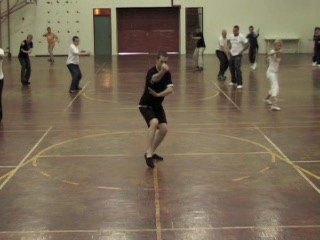
Here are Combat Sequences 7 and 8. Once a sequence begins, it continues smoothly to its completion without any pause in between. The whole sequence is performed in one breath, known in Chinese as “yeit hei hor seng” (Cantonese), or “yi qi ke cheng” (Mandarin). The practitioner must, of course, be very familiar with both the forms and their order of performance. Otherwise, he would have to go back one step to practice the sequences pattern by pattern.
Linking Sequences to Form Set
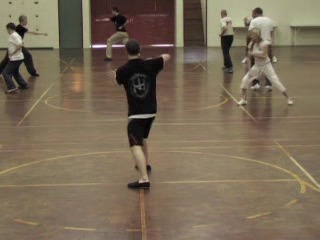
The four combat sequences, Sequences 5 to 8, are linked together to form a set. It is presented here in two parts. There is no break between the first part shown here and the second part shown in the following video clip. Each initiator's or responder's mode of a sequence is completed in one breath. The emphasis here is on correctness of form, force and fluidity of movement.
No Change in the Appearance of the Performer's Face
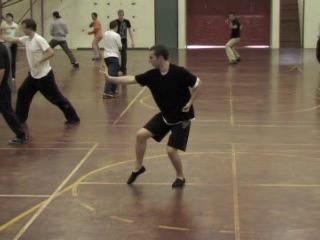
This is the second part of the set formed by linking the Combat Sequences 5 to 8. The first part shown in the previous video clip and the second part shown here should be performed continuously. This set is called “Fierce Tiger Speeds Through Valley”, after the most popular pattern in the set. At the completion of performing a set, the practitioner should not be tired or out of breath, described poetic in Chinese as “mien pat koi yoong” (Cantonese), or “nian bu kai young”, which literally means “there is no change in the appearance of the performer's face”.
LINKS
Review of the Intensive Shaolin Kungfu Course in Sabah in March 2007
- Overview 1 : The Fundamentals
- Overview 2 : The 16 Combat Sequences
- Overview 3 : Are They Performing Kungfu Dance?
- The Basics of Shaolin Kungfu Training
- Fundamental Combat Skills
- Defeat you Hand to your Opponent, Victory you Create Yourself
- Avoiding Disadvantages and Seeking Advantages
- Basic Principles and Tactics of Combat
- Skills derived from Sparring can be Rewardingly used in Daily Life
- Some Secrets in Practicing Genuine Kungfu
-
Various Ways to Move into an Opponent
- Applying Combat Sequences in Sparring
- Linking Sequences to be More Combat Efficient
- The Secrets of Continuous Cannons
- The Mechanics of Continuation
- Marvelous Techniques Beget Marvelous Techniques
- Perfecting Forms and Developing Force
- Applying Tactics in Combat
-
Objectives of Form Training in Solo
- Being Fluent in Kicking Techniques before Applying them in Combat
- Using Tactics in Kicking Attacks and Defences
- Different Levels of Sophistication in Sparring and Fighting
- The Legacy of Uncle Righteousness: Secret of Continuous Cannons and their Counters
-
Benefiting from the Experiences and Teachings of Past Masters
- Poetic Patterns Can be Very Deadly
- Moving Back One Step when in Diffiuclt Situations
- Linking Sequences to Form a Kungfu Set
- Felling Techniques in Kungfu are Different from Judo and Wrestling
- Butterfly Palms and Hiding Flowers are Excellent in Countering Felling and Gripping Attacks
-
Let Mercy Flow from the Hands
- Benefits of Solo Set Practice — Combat Sequences 13 to 16
- From Pre-Choice Sequences to Free Sparring
- Applying Shaolin Patterns Correctly and Spontaneously in Free Sparring
- Shaolin Kungfu against Boxing and Kick-Boxing
- Shaolin Counters against Wrestling Shoots
- The Secret of Grandmaster Ho Fatt Nam
- Why Shaolin Kungfu is Technically Faster than Boxing
- Shaolin Techniques, Tactics and Strategies against Boxing
- Revealing Secrets of Past Taijiquan Masters
- Overwhelming Opponents with Just One Pattern
- Poetry and Elegance in Effective Combat
